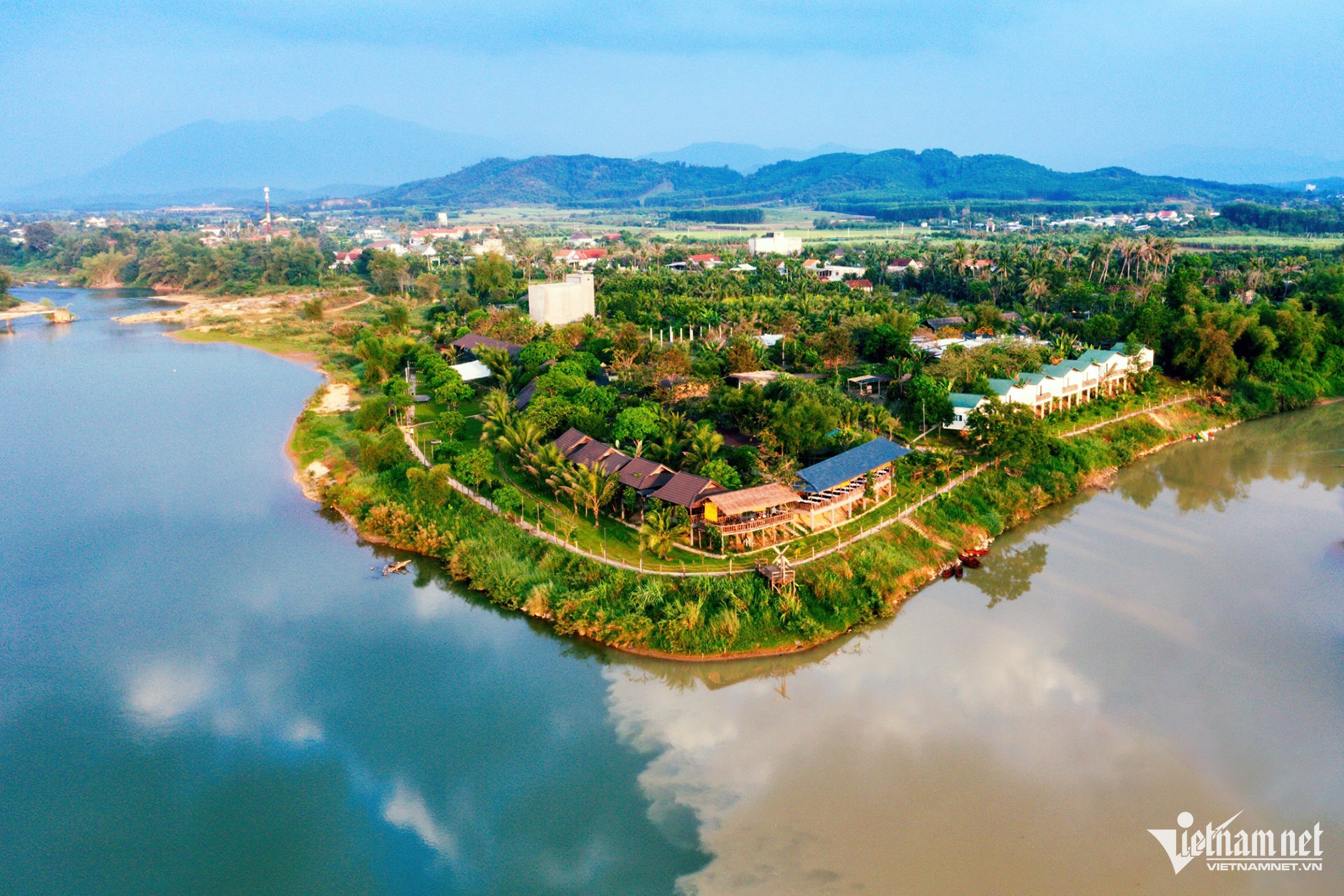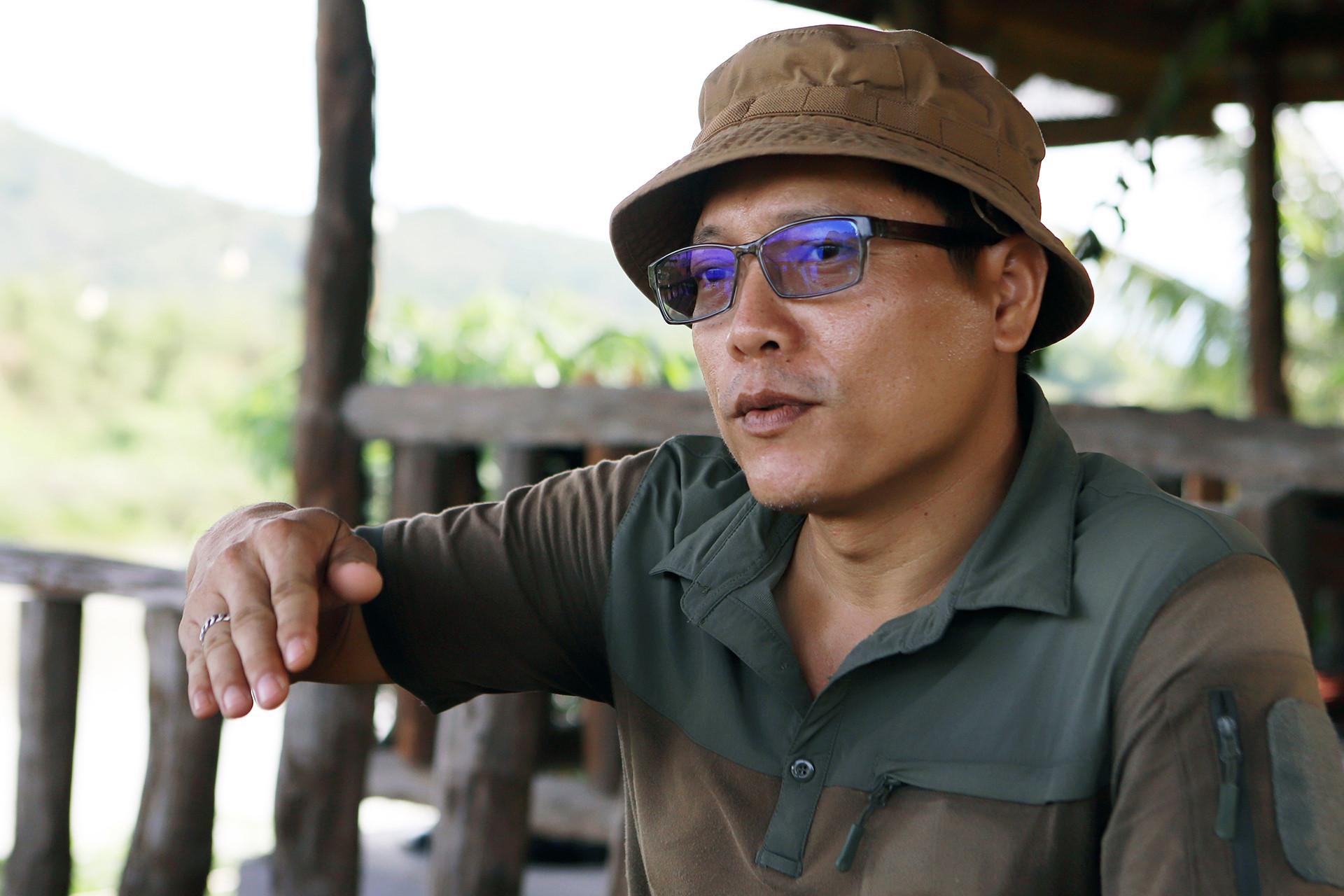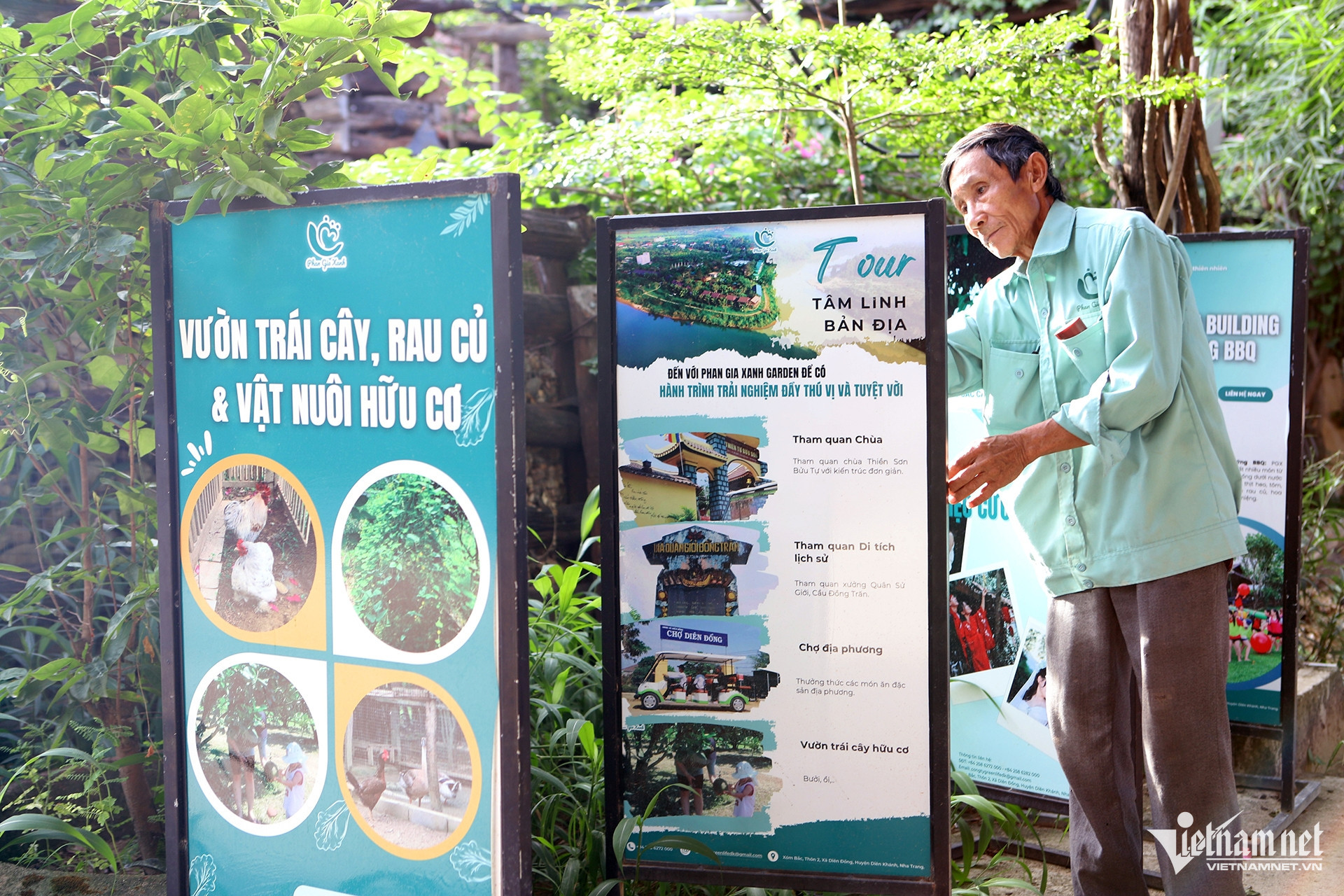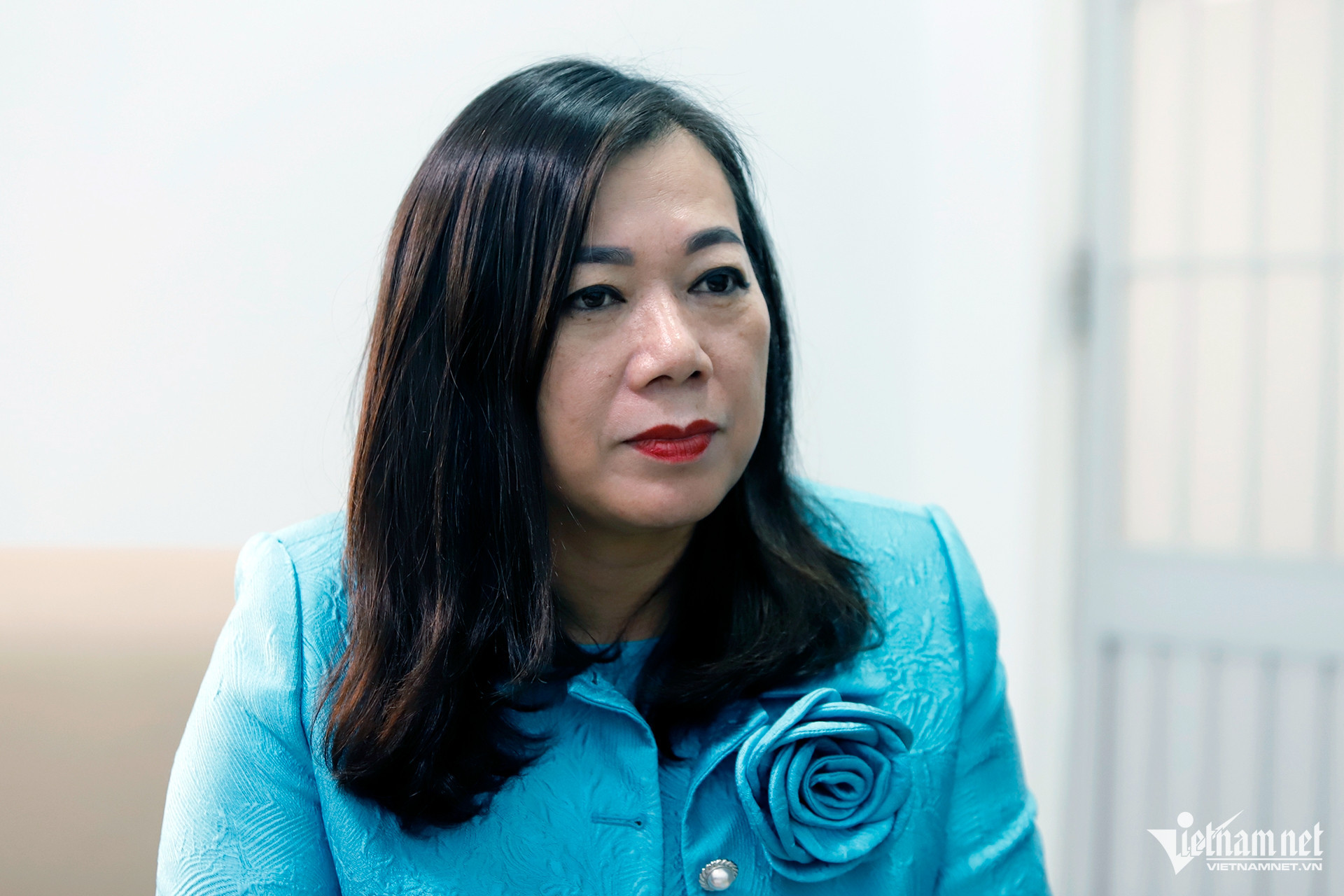Editorial note
Vietnam's economic growth recovery in the first half of 2024 is evident, with GDP in the second quarter reaching nearly 7%, bringing GDP growth in the first half to 6.42%.
Contributing to this recovery is the significant rise of several localities, including Khanh Hoa's remarkable rebound after two years of struggling due to the Covid-19 pandemic. Changes in mindset and actions, along with the ability to embrace the 'green' trend, have led to impressive growth figures and numerous innovations in this locality.
The series "Khanh Hoa Reinvents Growth Drivers" by VietNamNet describes this locality's journey of overcoming difficulties and seizing new trends.
Part 1: Green growth and innovation drive Khanh Hoa’s economic rebound
Part 2: High-tech offshore farming: A billion-dollar industry for Khanh Hoa fishermen
Part 3: Khanh Hoa's green revolution: Sea grapes transform lives and environment
Thoughtful conservation efforts
At the entrance of Phan Gia Xanh Garden in Dien Dong Commune (Dien Khanh District, Khanh Hoa Province), a prominent sign reads: “Using Green Energy Contributes to Environmental Protection.” This sign highlights the solar power system installed on April 2, 2023, which significantly reduces 36 tons of CO2 emissions annually.
Vo Ngoc Han, the owner of this tourist area, proudly notes that the rooftop solar system generates sufficient electricity for the entire site, minimizing reliance on the national grid.

Han and his wife envisioned creating a multi-service complex that includes a restaurant, café, eco-tourism area, and farming. Their approach focuses on green, zero-emission operations.
Before 2020, the land was nearly abandoned, used only for vegetable cultivation by locals. During the Covid-19 outbreak, Han and his wife decided to transform the wasteland into an eco-tourism area, hoping to offer a nature-connected space for relaxation. They meticulously developed each part of the area into a green tourist site.
“We operate on a circular model. Organic waste is composted to fertilize crops, and harvested fruits and vegetables are used in dishes for our visitors,” Han explains.

The tourist area attracts around 1,500 visitors per month, with many student groups visiting after the Lunar New Year to participate in farming and animal husbandry activities. All materials and items used are environmentally friendly, with no plastic waste.
The name "Phan Gia Xanh Garden" reflects the green ethos of the site, with "Xanh" symbolizing the blue sea of Khanh Hoa, the green of agriculture, and a commitment to zero greenhouse gas emissions.
Han acknowledges the challenges and costs involved in developing such a green tourism model but remains committed to contributing to the green transition and supporting local farmers.

Beyond Phan Gia Xanh, many other tourism models in Khanh Hoa are embracing green practices.
On Hoa Lan (Orchid) Island in Ninh Phu Commune (Ninh Hoa Town), visitors enjoy a pristine environment free from plastic waste. Tran Minh Duc, Director of Long Phu Tourism Joint Stock Company, describes the island as an eco-tourism site that harmonizes with nature.
Duc emphasizes that eco-tourism in harmony with nature is a valuable model for environmental protection and preserving natural elements. The company uses the island’s natural features to develop visitor activities, such as exploring mangrove forests and learning about local flora and fauna.
Duc provides examples: The island has mangrove forests and native flora and fauna. The company opens pathways for tourists to paddle into the mangrove forest to explore the ecosystem. Each tree has a QR code for tourists to scan and learn about its name and growth characteristics. Within the mangrove forest, a section is designated for tourists to catch shrimp, crabs, and fish, or organize activities like goose racing and bird performances.

Plastic bags and bottles have been banned from Hoa Lan Island for years. Duc notes that initially convincing guests to adhere to this policy was challenging, but as they experienced the island’s reasonably priced, clean services, the problem was gradually resolved.
What makes Duc even happier is that this eco-tourism model is increasingly attracting visitors, with the number growing significantly each year. Today, the island averages 800-1,000 visitors daily, experiencing various services and staying overnight.
Growth must also be green
Khanh Hoa is a leading province in Vietnam’s tourism sector, known for its marine and island tourism. In 2023, the province welcomed 7.2 million tourists, a 181.6% increase compared to 2022, with revenue exceeding 33 trillion VND ($1.3 billion), up 142.8%.
In the first half of 2024, the number of overnight tourists reached nearly 5.2 million, an 88% increase year-over-year, with revenue estimated at 26.072 trillion VND ($1.1 billion), up 97%.

To regain the rapid growth momentum seen before Covid-19, Nguyen Thi Le Thanh, Director of the Khanh Hoa Department of Tourism, highlights the province's intensified promotional efforts both domestically and internationally. Events such as the 2024 Nha Trang Sea Tourism Festival and the 2024 Nha Trang International Light Festival have successfully attracted large numbers of visitors.
However, the province faces challenges in sustainable development, such as natural resource management, environmental protection, and improving the quality of eco-friendly tourism products.
Thanh stresses that Khanh Hoa’s tourism must prioritize green practices to achieve sustainable development. This includes encouraging responsible tourism, sustainable investment, and green technology. Efforts are also focused on waste management, recycling, and reducing the use of non-recyclable materials.

In April, Khanh Hoa hosted a forum on "Green and Sustainable Tourism Development," seeking practical solutions for greener tourism. The province promotes community-level ecotourism, involving locals in conservation activities, and utilizing conservation values for sustainable livelihoods.
Thanh emphasizes the importance of assessing environmental impacts rigorously and training high-quality tourism personnel to meet the demands of innovative and sustainable tourism.
Efforts to raise awareness among tourists and the community about environmental protection are also crucial. Simple actions, such as avoiding littering and participating in cleanup activities, contribute significantly to protecting the environment and promoting green tourism.
Tam An, Xuan Ngoc, Hien Anh